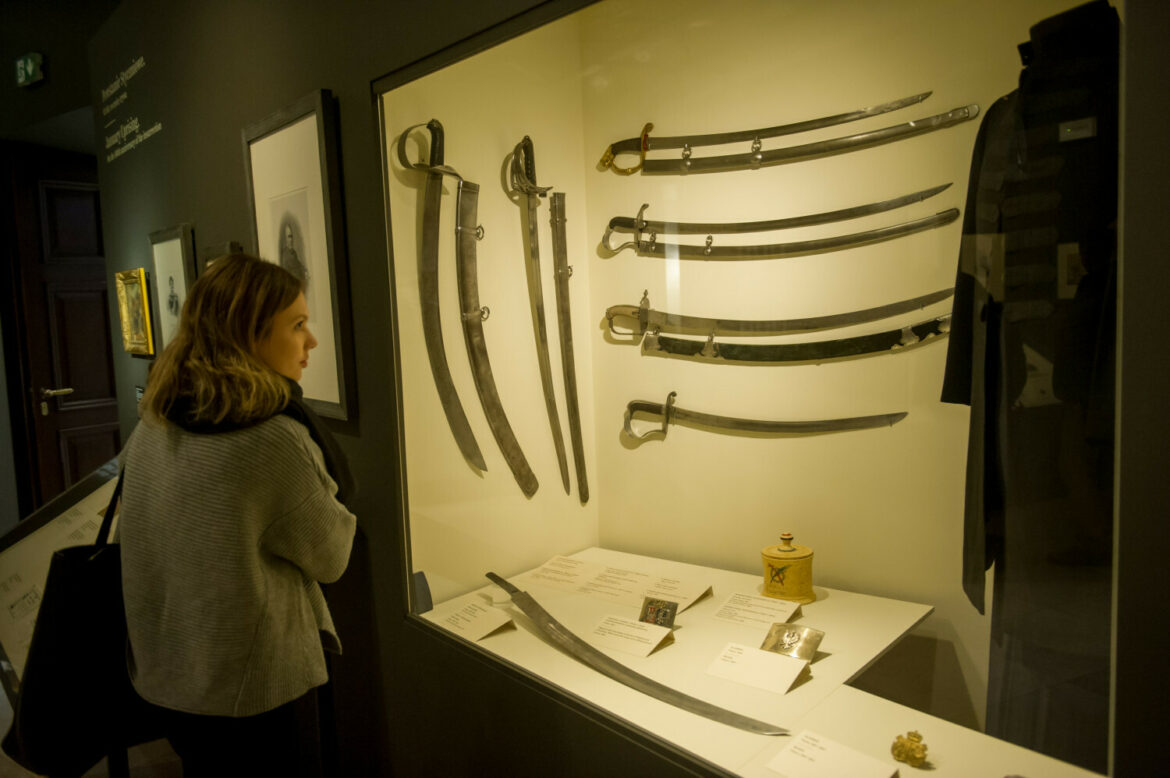The Gallery of 19th Century Polish Art at the National Museum in Krakow is hosting an exhibition “The January Uprising. On the 160th Anniversary of the Uprising”. The exhibition at the Sukiennice in Kraków’s Market Square inaugurates a two-year programme of national celebrations of the anniversary of the largest and longest-lasting Polish uprising.
The exhibition is presenting memorabilia of the January insurgents, their weapons and banners held in the collection of the National Museum in Kraków, as well as iconography of the uprising’s leaders, battles and skirmishes fought against the Tsarist army. Undoubtedly the most valuable items on display are the three banners, including the flag which was most probably used by troops under the command of Edmund Taczanowski in 1863.
Also, the Sukiennice exhibition displays personal items – a telescope left by the uprising’s dictator Romuald Traugutt, a lock of Zygmunt Sierakowski’s hair and a photograph of his daughter, Zygmunta Sierakowska, born in exile after her father’s execution on 27 June 1863, and who died less than two years later. An unusual exhibit is a bread button made in 1863 by a prisoner of the Warsaw Citadel.
The exhibition also features photographs of the insurgents. and period documents and prints, as well as patriotic jewellery from the period leading up to the uprising. A total of 220 exhibits have been gathered in the Sukiennice Hall.
As a result of the uprising, almost 20,000 Poles lost their lives, and another as many were exiled to Siberia. The memory of the events passed on by witnesses and artists had a huge impact on subsequent generations. 51 years after the January uprising, the descendants of the insurgents surged to fight for freedom under the leadership of Józef Piłsudski. After independence was regained, all the veterans of the January Uprising who were still alive were honoured with the rank of officer and the protection of the state.
Arkadiusz Słomczyński





